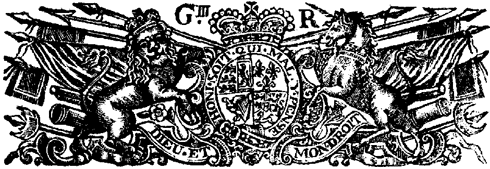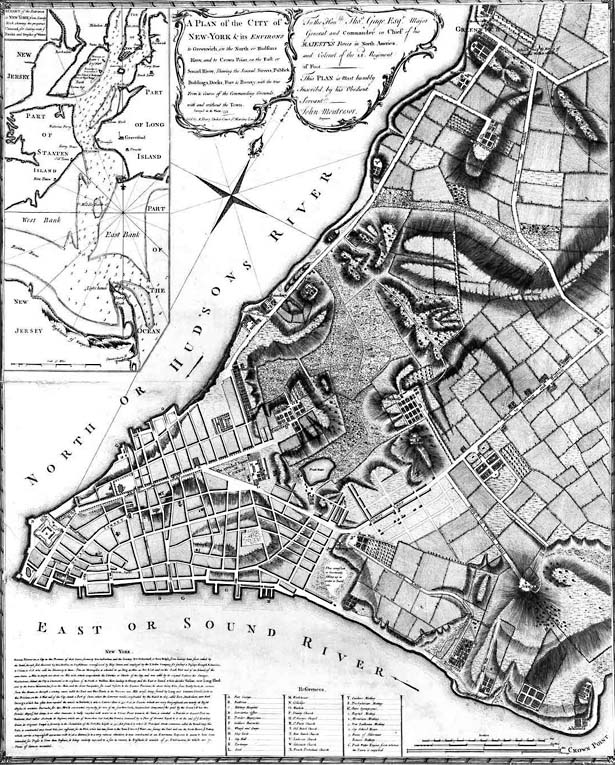

First Foot Guards
The
Regiment during the Revolutionary War
Chronology
13
February 1776
Orders were issued from Guards Headquarters in London
to form a detachment for service in the American theater
taken from the three Regiments of Foot Guards:
First Foot
Coldstream
Third Guards
They were commanded by Brigadier General Edward Mathew (Coldstream Guards).
The detachment consisted of 15 privates from each of the 64 companies of Foot
Guards.
Officers, NCOs, and musicians were also drawn from the regiments.
A chaplain, surgeon, and surgeon's mates were recruited.
They were divided into:
8 regular infantry
or Battalion companies
1 Light Infantry company
1 Grenadier company.
2
May 1776
The unit embarked for America
12
August 1776
They arrived at Sandy Hook NJ (New York Harbor)
22
August 1776
They went ashore on on Long Island, camping at New Utrecht.
Shortly after their arrival the uniform was altered from the parade ground look of a London garrison regiment to the more practical appearance of a combat unit. The cocked hats of the infantrymen were let down and cut smaller, and turned up on one side only. Breeches, stockings and gaiters were replaced by white trousers and half-gaiters (spatterdashes).
General Howe ordered
the unit to the field as a Brigade composed of 2 battalions of 5 companies each.
First Battalion:
Grenadier Company (men and officers from all three regiments)
1st, 2nd, and 3rd Infantry Companies (men and officers from First Guards)
Brigade or 4th Company (men from all three regiments, officers from First Guards)
Second Battalion:
Companies 5 and 6 (men and officers from Third Guards)
Companies 7 and 8 (men and officers from Coldstream Guards)
Light Infantry Company (men and officers from all three regiments)
Musick:The fifer and drummer were from a
Grenadier Company in the Coldstream Guards.
The Guards Grenadier Company:
120 privates, 15 from each of the existing Grenadier Companies:
4 in First Guards, 2 each in Coldstream and Third Guards.
The three original Grenadier officers were:
Lieutenant-Colonel Sir George Osborn (Third Guards)
Captain Frederick Madan (First Guards)
Captain George Stuart Bourne (Coldstream Guards)
Serjeants:
Serjeant Webb (First Guards)
Serjeant Woods (First Guards)
Serjeant Havill (Coldstream Guards)
Serjeant Crookshanks (Third Guards)
Corporals:
Corporal Kier (Third Guards)
Corporal Crockett (First Guards)
Corporal Bennett (First Guards)
Corporal Wilcocks (Coldstream Guards)
27
August 1776
The Guards participated almost immediately after landing in the Battle
of Long Island.
until
15 September 1776
They landed on Manhattan at at Kip's Bay, and camped at Hell Gate
(northernmost Manhattan).

Engineer John Montresor's map of New York
They encamped near Turtle Bay.
21
September 1776
The men were called out during the night to help prevent the spread
of the fire
that burned one-third of the city of New York.
The Grenadier Company
suffered the loss of two of its officers early in the campaign:
Captain Bourne died in New York on 14 October 1776
Captain Madan was left sick in New York from October 1776 until May 1777.
11 October 1776
Captain Charles Leigh of the 6th Company (Third Guards) was assigned
to duty with the Grenadiers, due to the sickness of captain Madan.
The Guards accompanied
Howe when the Army went north and landed at Throg's Neck
(where the Bronx-Long Island bridge is today) on
12 October 1776 and Pell's Point on 18 October 1776.
28
October 1776
They were present at the Battle of White Plains,
although they were not engaged in combat.
The army marched west to Tarrytown NY and then south towards Manhattan again.
15
November 1776
The Guards were ordered to leave their camp near Kingsbridge, New
York, and be ready to march at 4h00
carrying canteens, blankets and haversacks with one day's provisions.
A local loyalist served as guide. They marched for Fort Washington on a prominent
height at the northern end of Manhattan.
The main assault was launched from the north by German troops under General
Knyphausen.
General Percy, with a column from New York City, formed line of battle from
the south.
The 42nd Regiment of Foot crossed Harlem Creek to storm the fort from the southeast.
Brigadier-General Mathew led the Brigade of Guards and the army Light Infantry
in a waterborne assault down Harlem Creek from Kingsbridge to attack the fort
from the northeast.
The defenders surrendered to Knyphausen, and although the Germans
suffered heavy losses in the fighting, there appear to have been no casualties
among the Guards.
From Fort Washington the Brigade, with other elements of the Crown Forces under Cornwallis, crossed the Hudson River to New Jersey, participating in the capture of Fort Lee and Fort Constitution.
After marching through
New Jersey, Cornwallis sent his force to winter quarters,
and the Guards were quartered at Raritan Landing, just up river from Brunswick
NJ.
January
1777
After the Continental victory at Trenton, the First Battalion of
Guards was ordered to the field for several days in early January 1777, while
the Second Battalion stayed with Brigadier General Mathew to assist in the defense
of Brunswick.
During the remainder of the winter the Guards participated in several raids, feints, and foraging parties.
May
1777
The Brigade was in combat at Short Hills NJ.
The Brigade embarked from New York with the forces destined for Philadelphia via the Chesapeake River.
The Guards saw action at Brandywine, Valley Forge, Germantown, and White Marsh before going to winter quarters in Philadelphia.
In 1778 the British forces, including the Guards, en route from Philadelphia
to New York,
met the Continentals in battle at Monmouth Courthouse NJ.
Due to a lack of officers, the Guards spent most of the next two years in garrison in and around New York City. The flank companies of the Brigade were sent to the field for raids and skirmishes including Portsmouth VA and New Haven CT in 1779, and Young's House NY in 1780.
1780
The entire Brigade saw action at Springfield NJ in 1780.
Brigadier General John Howard (First Guards) was temporarily appointed to replace
Brigadier General Mathew in 1780 until the arrival of the new commander, Brigadier
General Charles O'Hara (Coldstream Guards).
October
1780
The Brigade embarked for the south, eventually joining Cornwallis
in North Carolina in January of 1781,
when O'Hara had joined the detachment.
1
February 1780
With great gallantry, the Guards forced the crossing of the Catawba
River NC.
15
March 1780
The Guards suffered grievous losses at the battle of Guilford Courthouse
NC,
after which the Brigade was temporarily reduced to one battalion of 4 under-strength
companies.
19
October 1781
The Guards marched with Cornwallis to Yorktown VA and surrendered
to the Continental Army.
General O'Hara was second in command, and surrendered Cornwallis' sword to Washington's
representative, General Lincoln.
Most of the Brigade's officers were paroled and the men marched into captivity at York PA, where they remained until 1783. During their imprisonment, Lieutenant-Colonel John Watson (Third Guards) commanded the Brigade from New York.
1783
The Guards returned to England in two detachments, one arriving in
January and one in July of 1783.
After disembarking, the men marched to London to rejoin their regiments.
Officers
of the 1776 Detachment
Click
More on regimental
history of
The First Foot Guards and the Grenadier Guards
Click
Return to homepage
Click